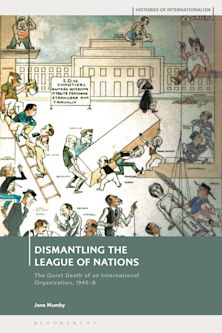- Home
- ACADEMIC
- Politics & International Relations
- International Relations - Other
- The Dynamics of Russian Politics
The Dynamics of Russian Politics
Putin's Reform of Federal-Regional Relations, Volume 1
Peter Reddaway (Anthology Editor) , Robert W. Orttung (Anthology Editor) , Alexander Duka (Contributor) , Sergei Kondrat'ev (Contributor) , Arbakhan Magomedov (Contributor) , Nikolai Petrov (Contributor) , Peter Reddaway (Contributor) , Peter Rutland (Contributor) , Maksim Shandarov (Contributor) , Gulnaz Sharafutdinova (Contributor) , Elizabeth Wishnick (Contributor) , Natalia Zubarevich (Contributor)
The Dynamics of Russian Politics
Putin's Reform of Federal-Regional Relations, Volume 1
Peter Reddaway (Anthology Editor) , Robert W. Orttung (Anthology Editor) , Alexander Duka (Contributor) , Sergei Kondrat'ev (Contributor) , Arbakhan Magomedov (Contributor) , Nikolai Petrov (Contributor) , Peter Reddaway (Contributor) , Peter Rutland (Contributor) , Maksim Shandarov (Contributor) , Gulnaz Sharafutdinova (Contributor) , Elizabeth Wishnick (Contributor) , Natalia Zubarevich (Contributor)
This product is usually dispatched within 2-4 weeks
- Delivery and returns info
-
Flat rate of $10.00 for shipping anywhere in Australia
You must sign in to add this item to your wishlist. Please sign in or create an account
Description
Who rules Russia? This question is generated by President Vladimir Putin's most ambitious reform program to date-his attempt since 2000 to reshape the Russian federation, centralize much of the power lost by the Kremlin to the eighty-nine regional governors during the 1990s, and strengthen his weak grip on Russia's institutions and political elite.
In The Dynamics of Russian Politics Russian and Western authors from the fields of political science, economics, ethnology, law, and journalism examine the reform's impact of key areas of Russian life, including big business, law enforcement, corruption, political party development, health care, local government, small business, and ethnic relations. Volume I presents the historical context and an overview of the reforms, then tracks how Putin's plans were implemented and resisted across each of the seven new federal okrugs, or megaregions, into which he divided Russia. In particular, the authors analyze the goals and contrasting political styles of his seven commissars and how their often-concealed struggles with the more independent and determined governors played out.
Volume II examines the impact of these reforms on Russia's main political institutions; the increasingly assertive business community; and the defense, police, and security ministries. Together, the two volumes simultaneously reveal that Putin's successes have been much more limited and ambiguous than is widely believed in the West while offering detailed and nuanced answers to the difficult but crucial question: Who rules Russia?
Table of Contents
Chapter 2 Key Issues in the Evolution of the Federal Okrugs and Center-Region Relations Under Putin
Chapter 3 North-West Federal Okrug
Chapter 4 Central Federal Okrug
Chapter 5 The Southern Federal Okrug
Chapter 6 Volga Federal Okrug
Chapter 7 The Urals Federal Okrug
Chapter 8 Siberian Federal Okrug
Chapter 9 The Far East Federal Okrug
Chapter 10 What Do the Okrug Reforms Add Up To? Some Conclusions
Product details
| Published | 17 Dec 2003 |
|---|---|
| Format | Paperback |
| Edition | 1st |
| Extent | 304 |
| ISBN | 9780742526440 |
| Imprint | Rowman & Littlefield Publishers |
| Dimensions | 229 x 150 mm |
| Publisher | Bloomsbury Publishing |
About the contributors
Reviews
-
An excellent edited volume reviewing the record of the federal okrugs decreed by Russian President Vladimir Putin....Taken as a whole, the volume provides a view of Russian politics at the nexus of center and periphery. Highly recommended.
Choice Reviews
-
An interesting read. Provides a timely and thorough interim assessment of the federal reforms implemented by Putin during his first term in office.
Slavic Review
-
Reddaway and Orttung's edited volume (the first in a series of two) is extremely valuable for understanding Vladimir Putin's answer to the question of how Russia is best ruled. Reddaway and Orttung provide perceptive introductory chapters and a conclusion. Between these are the particularly valuabe individual chapters covering each of the seven 'federal okrugs' in some detail.
American Political Science Review
-
Reddaway and Ottung's edited volume (the first in a series of two) is extremely valuable for understanding Vladimir Putin's answer to the question of how Russia is best ruled. It takes the form of a detailed study of Putin's federal reforms of 2000 and their aftermaths.
Edwin Bacon, University of Birmingham



































